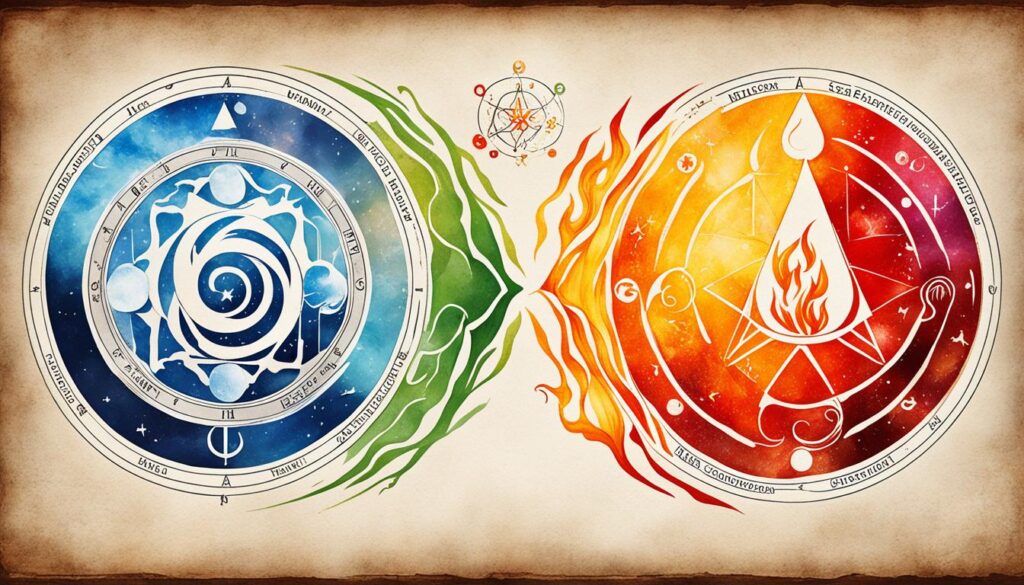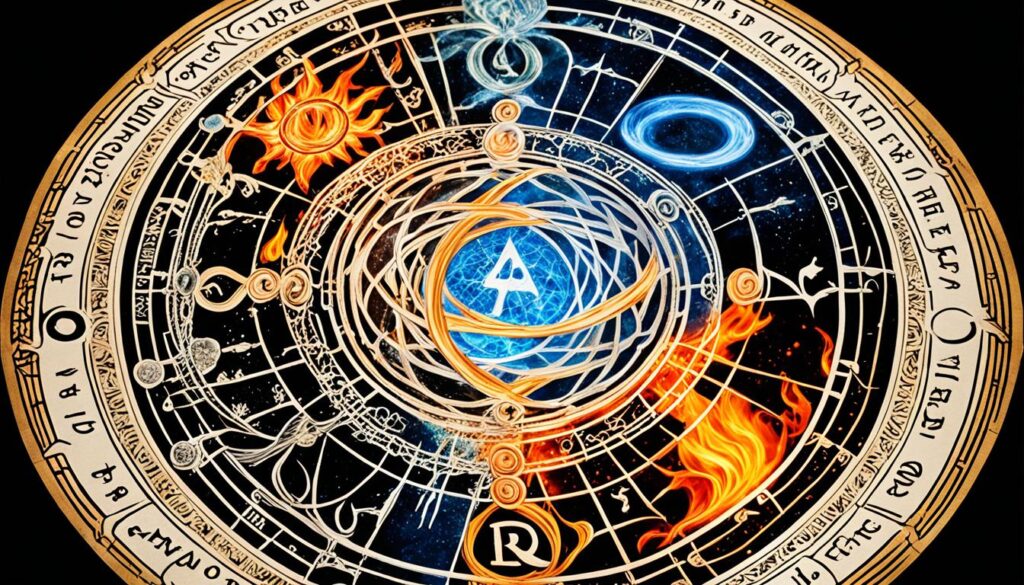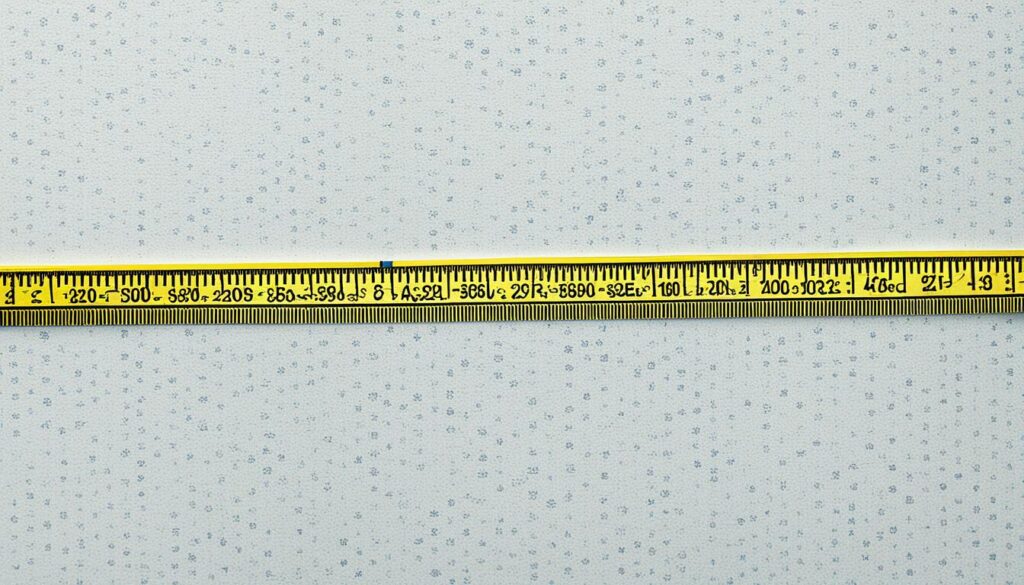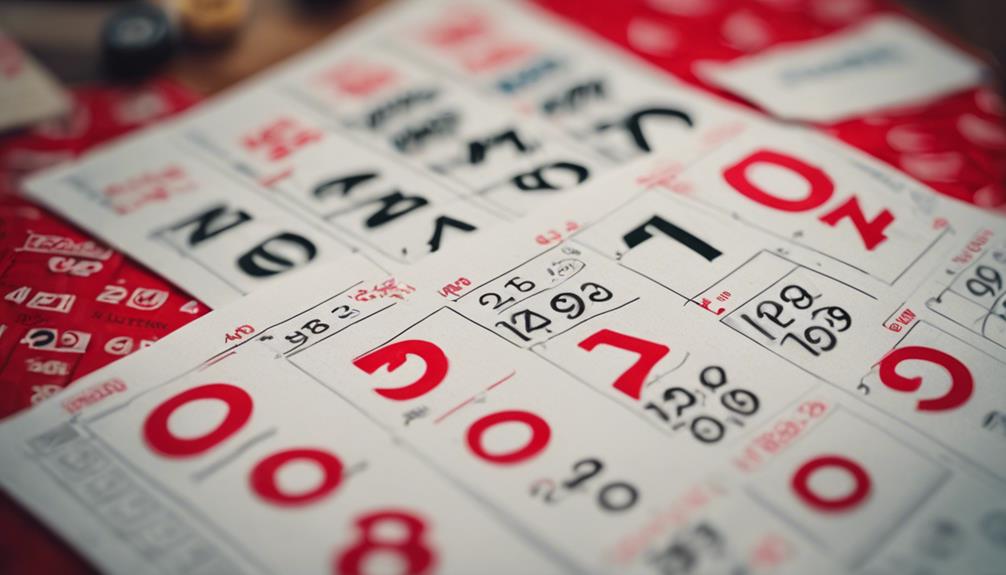Numerology and Astrology
Astrology Elements Explained: Fire, Water, Air, Earth
Explore the cosmic significance of “The Elements in Astrology: Fire, Water, Air, and Earth Explained” for a deeper understanding of your astrological profile.

Ever heard about how **Fire, Water, Air, and Earth** shape our lives in astrology? These elements are super important for understanding the zodiac signs and what makes them tick. They influence our traits and how we act, giving us a peek into who we are and why we do what we do. Let’s explore the exciting world of astrology elements and discover the amazing secrets they reveal.
Key Takeaways:
- Fire, Water, Air, and Earth are the four elements that govern astrology.
- Each element imparts distinct qualities to the zodiac signs it governs.
- The elements influence personality traits, motivations, and life approaches of each zodiac sign.
- Understanding your element can provide insights into your own nature and help you navigate life based on your elemental influence.
- Exploring astrology and element signs can be a powerful tool for self-discovery and personal growth.
What Do the Elements Mean in Astrology?
In astrology, the elements—Fire, Water, Air, and Earth—serve as foundational principles that influence the characteristics and behaviors associated with the twelve zodiac signs. Each element imparts distinct qualities to the signs it governs.
- Fire signs: Aries, Leo, and Sagittarius, are passionate and bold. They possess an unstoppable energy and display a zest for life.
- Water signs: Cancer, Scorpio, and Pisces, are emotional and intuitive. They have a deep connection with their feelings and exhibit strong empathy.
- Air signs: Gemini, Libra, and Aquarius, are intellectual and communicative. They excel in social interactions and abstract thinking.
- Earth signs: Taurus, Virgo, and Capricorn, are practical and stable. They have a grounded approach to life, focusing on tangible achievements.
Each zodiac sign embodies the qualities of their respective element, shaping their personality traits and behavior.
The elements in astrology provide a deeper understanding of the intricate tapestry of human nature. By recognizing the elemental influence on each zodiac sign, we can decipher the profound meanings and qualities that define their essence. Whether it is the fiery passion of the Fire signs, the intuitive depth of the Water signs, the intellectual prowess of the Air signs, or the practicality of the Earth signs, the elements lay the foundation for exploring the complex mosaic of the zodiac signs and the uniqueness of each individual.
The Influence of Elements on Zodiac Signs
The elements have a profound impact on the characteristics and attributes of each zodiac sign. They mold personalities, motivations, and life approaches, ultimately shaping the way individuals navigate the world. The astrological elements not only define the qualities of individual signs but also influence how different signs interact and relate to each other.
The Fire signs, fueled by passion and fueled by energy, are natural-born leaders who radiate confidence and ambition. The Water signs, with their emotional depth and intuition, possess exceptional empathy and are highly attuned to the emotions of others. The Air signs, known for their intellectual prowess and exceptional communication skills, thrive in social settings and excel in conveying ideas. The Earth signs, guided by practicality and stability, showcase determination and a strong work ethic, making them reliable and dependable.
The influential nature of the elements shines through in the intricate web of relationships formed between the zodiac signs. Some signs harmonize effortlessly, creating a symphony of shared energies, while others experience challenges and contrasting dynamics, leading to exciting clashes or valuable growth opportunities.
The key to understanding the elements and their impact on the zodiac signs lies in recognizing the interplay between the individual signs and the elemental forces that govern them. By delving deeper into the meanings of each element, we unlock a treasure trove of insights into the rich tapestry of human personalities and relationships.
| Zodiac Signs | Element | Characteristics |
|---|---|---|
| Aries, Leo, Sagittarius | Fire | Passionate, bold, energetic |
| Taurus, Virgo, Capricorn | Earth | Practical, stable, reliable |
| Gemini, Libra, Aquarius | Air | Intellectual, communicative, adaptable |
| Cancer, Scorpio, Pisces | Water | Emotional, intuitive, empathetic |
How Do Elements Affect Zodiac Signs?
The elements have a profound influence on the characteristics of each zodiac sign, shaping their unique personalities, motivations, and life approaches. Let’s take a closer look at how each element impacts the different signs in the zodiac:
Fire Signs: Passion and Energy
Fire signs, including Aries, Leo, and Sagittarius, are driven by a powerful sense of passion and boundless energy. They are known for their enthusiasm, courage, and zest for life. Fire signs are natural leaders and are often drawn to creative and adventurous pursuits.
Air Signs: Social Interactions and Abstract Thinking
Air signs, represented by Gemini, Libra, and Aquarius, excel in social interactions and abstract thinking. They possess sharp intellects, quick wit, and a strong desire for intellectual stimulation. Air signs thrive on communication and are adept at expressing their ideas and forming meaningful connections with others.
Earth Signs: Stability and Tangible Achievements
Earth signs, which include Taurus, Virgo, and Capricorn, are grounded in practicality and stability. They prioritize the tangible aspects of life and are known for their reliability, patience, and determination. Earth signs are hardworking and excel in achieving concrete goals with their methodical and organized approach.
Water Signs: Empathy and Emotional Depth
Water signs, comprising Cancer, Scorpio, and Pisces, navigate life with a deep sense of empathy and emotional depth. These signs are highly intuitive, sensitive, and easily attuned to the emotions of others. Water signs possess an artistic and imaginative nature, often relying on their emotions to guide their decisions.
The elemental traits not only shape the individual characteristics of each zodiac sign but also influence how different signs interact and relate to one another. The compatibility between signs of the same element may be exceptionally harmonious, while signs of contrasting elements may experience unique challenges and growth opportunities.
Now that we’ve explored the influence of elements on zodiac signs, let’s move on to discovering how to determine which element you belong to and what it means for your own personality and journey.
How Do I Know the Element I Belong To?
Understanding your element in astrology is a key step towards self-discovery and gaining insights into your personality traits. Each zodiac sign is associated with one of the four elements—Fire, Water, Air, or Earth. By identifying your zodiac sign based on your birth date, you can determine your corresponding element and explore how it shapes your characteristics.
To find your element, match your zodiac sign with its elemental association. For instance, if your sign is Aries, Leo, or Sagittarius, you belong to the Fire element. On the other hand, if your sign is Cancer, Scorpio, or Pisces, you belong to the Water element. By recognizing your elemental affiliation, you can gain a deeper understanding of your innate qualities and navigate life in alignment with your elemental influence.
Discovering your element helps you tap into the unique strengths and challenges associated with your zodiac sign. It allows you to examine the elemental characteristics that shape your behaviors, motivations, and interactions with others. Whether you are a fiery Fire sign, an intuitive Water sign, an intellectual Air sign, or a practical Earth sign, embracing your element empowers you to leverage your inherent traits and forge a path of self-growth.
| Fire Signs: | Water Signs: | Air Signs: | Earth Signs: |
|---|---|---|---|
| Aries | Cancer | Gemini | Taurus |
| Leo | Scorpio | Libra | Virgo |
| Sagittarius | Pisces | Aquarius | Capricorn |
Fire signs encompass Aries, Leo, and Sagittarius and are known for their passion, enthusiasm, and boldness. Water signs include Cancer, Scorpio, and Pisces and exhibit emotional depth and strong intuition. Air signs, such as Gemini, Libra, and Aquarius, excel in intellect and communication. Earth signs consist of Taurus, Virgo, and Capricorn and are grounded in practicality and stability.
Your zodiac sign and its corresponding element offer valuable insights into your strengths and weaknesses. Embrace your element and harness its energy to navigate life’s challenges and fulfill your true potential.
The Fire Signs: Aries, Leo, and Sagittarius
The Fire signs in astrology, which include Aries, Leo, and Sagittarius, are renowned for their fiery and passionate nature. These signs are characterized by their adventurous spirit, boldness, energy, enthusiasm, and unwavering courage. Each Fire sign expresses the inherent qualities of the element in unique ways, adding a distinctive flavor to their personalities and approaches to life.
Aries, the first sign of the zodiac, embodies the pioneering spirit of Fire. Aries individuals are known for their fierce determination, independence, and unyielding drive. They fearlessly dive into new experiences and are natural-born leaders, always ready to take charge and initiate change.
“Aries embodies the pioneering spirit, fearlessly diving into new experiences and leading with unwavering determination.”
Leo, represented by the majestic lion, radiates warmth, charisma, and an infectious enthusiasm. They effortlessly command attention, drawing others in with their magnetic presence. Leo individuals are natural performers and possess a creative flair that allows them to shine in any situation.
“Leo exudes warmth, charisma, and a natural talent for captivating those around them.”
Sagittarius, the adventurous philosopher of the zodiac, embodies the expansive nature of Fire. These individuals are seekers of knowledge, always yearning for new experiences and broader perspectives. Sagittarius individuals are known for their optimism, curiosity, and their ability to inspire others with their broad-minded outlook.
“Sagittarius embodies the expansive nature of Fire, driven by curiosity and a thirst for knowledge.”
Fire signs are dynamic, and their passion ignites their inquisitive minds. They thrive in environments that allow them to explore and express their creative impulses. Adventure is often a central theme in their lives, as they seek new challenges and embrace them head-on.
The image above visually captures the essence of the Fire signs, showcasing their vibrant energy and zest for life. Just as flames dance and flicker, so do the Fire signs, illuminating the world with their fiery spirit and leaving a lasting impact in everything they do.
The Water Signs: Cancer, Scorpio, and Pisces
The Water signs in astrology, including Cancer, Scorpio, and Pisces, are deeply connected to their elemental nature. These signs are known for their emotional depth, strong intuition, and capacity for empathy and connection. Each Water sign has its unique characteristics that are enhanced by the element of Water itself.
Cancer, symbolized by the crab, is nurturing and caring towards others. They possess a natural ability to provide emotional support and create a sense of security. Cancer individuals are highly intuitive and have a remarkable understanding of the emotions of those around them. Their empathetic nature allows them to forge deep connections with others.
Scorpio, represented by the scorpion, is intense and mysterious. They possess an innate desire to delve into the depths of life and unravel its secrets. Scorpios are highly intuitive and perceptive, often sensing hidden motives and emotions. They have a transformative nature and can navigate through the darkest waters with resilience.
Pisces, symbolized by the fish, is imaginative and compassionate. They have a deep connection to their emotions and the emotions of others. Pisces individuals often possess artistic talents and a vivid imagination. They have a natural instinct for understanding the needs and struggles of others, making them incredibly empathetic and supportive.
The element of Water enhances the ability of these signs to connect with others on an emotional level. It grants them the power to navigate through the vast ocean of emotions with sensitivity and understanding. The Water signs bring a unique depth of feeling and intuition to the zodiac, contributing to the rich tapestry of astrological energies.
| Sign | Characteristics |
|---|---|
| Cancer | Nurturing, caring, empathetic, intuitive |
| Scorpio | Intense, mysterious, transformative, perceptive |
| Pisces | Imaginative, compassionate, artistic, empathetic |
The Air Signs: Gemini, Libra, and Aquarius
The Air signs in astrology, represented by Gemini, Libra, and Aquarius, bring intellectual prowess, effective communication, and a penchant for social interactions to the forefront. These signs are known for their quick wit, adaptability, inquisitiveness, and a strong inclination towards intellectual stimulation.
Gemini: Versatile and Communicative
Gemini, the first of the Air signs, embodies versatility and exceptional communication skills. People born under this sign are known for their eloquence, charm, and ability to effortlessly adapt to any social situation. They possess a natural curiosity that fuels their quest for knowledge and understanding of the world around them.
Libra: Seeking Harmony and Balance
Libra, the second Air sign, is all about seeking harmony, balance, and fairness in all aspects of life. Individuals born under this sign possess a diplomatic nature and a keen eye for beauty. They excel in navigating social dynamics and are often seen as peacemakers, striving to create harmonious environments for themselves and others.
Aquarius: Championing Progressive Ideas
Aquarius, the final Air sign, is known for its progressive mindset and unwavering commitment to humanitarian causes. Those born under this sign are often trailblazers, embracing innovative ideas and striving for a better future. Aquarians are known for their unique perspective and ability to think outside the box, making them natural leaders in championing change and equality.
“The Air signs bring intellectual prowess, effective communication, and a penchant for social interactions to the forefront.”
The airy nature of the Air signs allows for a fresh and dynamic approach to life. Their ability to engage in intellectual pursuits, connect with others, and adapt to various situations makes them natural influencers and excellent team players. With their analytical minds and open-mindedness, Air signs bring a breath of fresh air to any situation they encounter, offering unique perspectives and innovative solutions.

| Zodiac Sign | Characteristics |
|---|---|
| Gemini | Versatile, Communicative, Curious |
| Libra | Seeking Harmony, Fairness, Diplomatic |
| Aquarius | Championing Progressive Ideas, Unique Perspective |
The Earth Signs: Taurus, Virgo, and Capricorn
The Earth signs, including Taurus, Virgo, and Capricorn, embody the grounded principles of practicality and stability. With their feet firmly planted on the earth, these signs exhibit traits of reliability, patience, determination, and a strong connection to the physical world.
Taurus, represented by the symbol of the Bull, seeks comfort and security in all aspects of life. Known for their unwavering determination, Taureans are steadfast and dependable, often displaying a keen sense of loyalty and dedication. They value material possessions and find solace in creating a stable and harmonious environment.
Virgo, the meticulous and analytical sign, thrives in organized and methodical environments. Fueled by their rationality and attention to detail, Virgos excel in problem-solving and highly value efficiency. Their practical nature helps them navigate the complexities of life with precision and focus.
Capricorn, represented by the Sea Goat, embodies ambition and the pursuit of tangible achievements. Driven by their disciplined and goal-oriented nature, Capricorns are known for their unwavering determination to succeed. They have a strong sense of responsibility and excel in leadership roles, always striving to leave a lasting impact on the world.
These Earth signs have an innate ability to navigate the practical aspects of life with ease. They value hard work, stability, and the tangible rewards that come from their efforts. With their feet firmly planted on the ground, Taurus, Virgo, and Capricorn provide an anchor of stability in a constantly changing world.
The Importance of Elements in Astrology
The elements in astrology hold great significance in comprehending the intricate workings of human nature and the influence of cosmic energies. Each zodiac sign’s association with a specific element sheds light on various aspects of their personality, motivations, and behavior. Moreover, the elements also shape how different signs interact and find harmony with one another, be it in relationships or other life pursuits.
Through the study of astrology, we can explore how the elements contribute to the multifaceted nature of individuals. Fire signs, characterized by their passion and ambition, exhibit a dynamic and assertive approach to life. Water signs, on the other hand, showcase deep emotional intelligence and intuition. Air signs excel in intellect and communication, while Earth signs ground themselves in practicality and stability.
“The elements in astrology act as the building blocks of understanding personality traits and the dynamics between different zodiac signs.”
By recognizing the significance of elements in astrology, we gain valuable insights into the inner workings of each zodiac sign. Whether it’s the fiery determination of Aries, the emotional depth of Scorpio, the intellectual curiosity of Gemini, or the practicality of Taurus, the elements have a profound influence on shaping personalities. They provide a framework for understanding the unique qualities that each zodiac sign brings to the table.
Furthermore, exploring the interplay between different elemental signs reveals the fascinating dynamics present in relationships and collaborations. It allows us to comprehend how certain signs complement or challenge each other due to their elemental characteristics. Understanding these dynamics can foster better connections and interactions, enhancing both personal and professional relationships.
As we continue to explore the elements in astrology, it becomes evident that they offer a rich tapestry of insights into the complexities of human nature. By delving into the significance of these elements, we unlock a deeper understanding of ourselves and those around us. Ultimately, astrology and its elements provide a powerful tool for self-discovery, personal growth, and building harmonious connections in an ever-changing world.

Exploring Your Astrology and Element Signs
Your astrology and element signs provide valuable insights into your personality traits, strengths, and areas for growth. By understanding your zodiac sign and its corresponding element, you can gain a deeper understanding of yourself and uncover hidden aspects of your nature. Exploring astrology and element signs can be a powerful tool for self-discovery and personal growth.
Astrology has long been used as a means of self-reflection and understanding. By delving into the ancient wisdom of astrology, you can gain insights into your unique combination of characteristics and tendencies. Whether you are a fiery Aries, a watery Cancer, an airy Libra, or an earthy Capricorn, your element sign significantly influences your approach to life and relationships.
Each zodiac sign has its own set of characteristics, but when combined with its corresponding element, a richer and more nuanced portrait of your personality emerges. For example, a Fire sign like Leo can be described as passionate, confident, and creative. However, when considering Leo’s alignment with the Fire element, these traits are intensified, making Leo individuals natural-born leaders with a zest for life and a warm charisma that draws others to them.
On the other hand, Water signs like Scorpio possess deep emotional intelligence and intuition. When combined with the nurturing qualities of the Water element, Scorpios develop a profound sense of empathy and have an uncanny ability to understand and connect with others on a deep level.
Air signs such as Gemini excel in communication and intellectual pursuits. When merged with the Air element, Geminis become social butterflies, adept at effortlessly navigating social interactions and exchanging ideas with ease and charm.
Earth signs, like Virgo, are practical, reliable, and grounded in the physical realm. Their connection to the Earth element intensifies these traits, giving them an unyielding determination and a meticulous eye for detail.
By exploring the intricate relationship between astrology and element signs, you can embark on a journey of self-discovery. Understanding your astrological profile can help you uncover your strengths and weaknesses, enabling you to make more informed decisions and embrace your true nature.
Self-Reflection Through Astrology Elements
“Our astrology and element signs guide us towards self-reflection and personal growth. By delving into the depths of our astrological profiles, we can gain valuable insights that pave the way for self-discovery and transformation.”
Self-reflection is a powerful tool for personal growth, and astrology offers a unique perspective on this journey. By examining the interplay between your zodiac sign and its corresponding element, you can uncover hidden patterns, motivations, and areas for improvement.
For example, if you are an Earth sign like Taurus, characterized by stability and practicality, you may find yourself seeking security and tangible achievements. Understanding these tendencies can help you channel your energy into endeavors that align with your strengths and provide a sense of fulfillment.
Conversely, if you are an Air sign like Aquarius, known for your intellectual pursuits and love for innovation, you may find it beneficial to explore ways to ground yourself and incorporate more stability into your life.
Your astrology and element signs offer a window into your authentic self. Embrace this opportunity for self-exploration and incorporate the wisdom of astrology into your personal growth journey.
By unlocking the secrets of your astrology and element signs, you can gain a deeper understanding of your true nature, discover your innate talents, and make choices that align with your highest potential. Self-discovery through astrology is a transformative process that empowers you to live a life of authenticity and fulfillment.

Conclusion
The elements—Fire, Water, Air, and Earth—serve as the foundation of astrology, providing valuable insights into the complex nature of each zodiac sign. By understanding the influence of these elements, one can gain a deeper understanding of themselves and others, paving the way for self-discovery and personal growth.
Throughout this article, we’ve explored how each element imparts unique characteristics and qualities to the zodiac signs they govern. The Fire signs embody passion and boldness, Air signs excel in communication and intellectual pursuits, Water signs display emotional depth and empathy, and Earth signs prioritize practicality and stability.
By delving into astrology and exploring the elements, individuals can unravel the intricate nuances of human nature. The significance of these elements lies in their ability to shape personalities and influence how different signs interact and relate to one another. Whether in relationships or other life endeavors, understanding astrology’s elements offers a profound tool for self-awareness, enhancing the journey of self-discovery and personal growth.FAQ
What are the elements in astrology?
How do the elements influence the characteristics of zodiac signs?
How can I determine which element I belong to?
What are the characteristics of Fire signs?
What are the characteristics of Water signs?
What are the characteristics of Air signs?
What are the characteristics of Earth signs?
Why are the elements important in astrology?
How can exploring astrology and element signs benefit me?
How Do Astrological Houses Relate to the Four Elements in Astrology?
In astrology, the astrological houses meanings & impacts are closely related to the four elements. The first house corresponds to the element of fire, representing the self and individual identity. The second house is linked to the earth element, symbolizing material possessions and stability. The third house is associated with air, representing communication and intellect. Finally, the fourth house is connected to water, signifying home and emotions. Understanding these connections can provide insight into one’s astrological chart.
Source Links
- https://www.thenightsky.com/blog/astrology-and-the-elements
- https://www.lilaverse.app/articles/fire-earth-air-water-signs-the-elements-of-astrology
- https://www.allure.com/story/zodiac-signs-elements-fire-earth-air-water
Vira, Community Manager – Vira is the dynamic voice behind our community engagement. Vira ensures our readers are heard and engaged, whether addressing inquiries or sparking discussions. Her efforts create a welcoming space for learners and enthusiasts to share insights and deepen their understanding of symbolic languages.
Numerology and Astrology
Convert Your Height: Inches to cm Explained
Discover how to quickly convert your height from inches to cm. Use our simple guide for an accurate measurement conversion.

Did you know there are **2.54 centimeters** in an inch? This amazing fact makes it clear why knowing how to switch your height from inches to centimeters really matters. Whether comparing height with friends or keeping track of your own, converting to centimeters means more **accuracy** and aligns with professional health and fitness standards. The **conversion process** is easy to grasp once you understand it, and a step-by-step guide can make it simple to put into practice.
Key Takeaways:
- Converting your height from inches to centimeters is essential for accurate height measurements and compatibility with medical and fitness standards.
- The conversion formula for inches to centimeters is multiplying the number of inches by 2.54.
- Follow a step-by-step guide to convert your height from inches to centimeters accurately.
- Avoid common mistakes like forgetting to multiply by 2.54 and rounding the result too early.
- Using centimeters for height measurements provides greater precision and ensures compatibility in various fields.
Why Convert Your Height from Inches to cm?
Converting your height from inches to centimeters is essential for accurate measurements and compatibility with various fields. It provides the necessary precision when comparing heights with others or tracking changes in your own height. Many medical and fitness professionals rely on centimeters as the standard unit of measurement, ensuring consistency and enabling accurate assessments. By converting your height to centimeters, you guarantee accuracy in these contexts and optimize communication in height-related discussions.
The Conversion Formula: Inches to cm
Converting inches to centimeters is a straightforward process that involves using a simple conversion formula. By multiplying the number of inches by 2.54, you can accurately convert inches to centimeters. This conversion formula is based on the fact that there are 2.54 centimeters in one inch.
For example, if you have a height of 60 inches and you want to convert it to centimeters, you would multiply 60 by 2.54. The result is 152.4 centimeters.
“Multiply the number of inches by 2.54 to get the equivalent height in centimeters.”
This conversion formula is widely used and accepted, making it easy to convert height measurements from inches to centimeters. By understanding this formula, you can quickly and accurately convert your height to the metric system.
Want to see a comprehensive conversion chart for common heights in inches and their corresponding measurements in centimeters? Keep reading:
Step-by-Step Guide: Convert Your Height from Inches to cm
Converting your height from inches to centimeters is a straightforward process that can be easily accomplished by following these simple steps:
- Take your height measurement in inches. Begin by measuring your height using inches as the unit of measurement. This can be done using a measuring tape or any other accurate measuring tool.
- Multiply the number of inches by 2.54 to get the equivalent height in centimeters. Once you have your height measurement in inches, multiply it by the conversion factor of 2.54. This conversion factor represents the number of centimeters in one inch. For example, if your height measurement is 65 inches, you would multiply 65 by 2.54 to get your height in centimeters (165.1 cm).
- Round the result to the nearest whole number for convenience. Finally, round the converted height to the nearest whole number for ease of use and readability. This step is optional but can be helpful in practical applications where decimal values are not required.
By following these step-by-step instructions, you can quickly and accurately convert your height from inches to centimeters, enabling you to use the metric system for height measurements in various contexts.

Conversion Chart: Inches to cm
Converting your height from inches to centimeters is made easier with the help of a conversion chart. Below is a detailed conversion chart that provides the common heights in inches and their corresponding measurements in centimeters:
| Height (inches) | Height (centimeters) |
|---|---|
| 60 | 152.4 |
| 62 | 157.5 |
| 64 | 162.6 |
| 66 | 167.6 |
| 68 | 172.7 |
| 70 | 177.8 |
By referring to this conversion chart, you can easily determine your height in centimeters based on your current height in inches. Simply locate your height in inches in the first column and find the corresponding measurement in centimeters in the second column.

Using this conversion chart not only saves you time but also ensures accuracy in converting your height. Whether you need your height in centimeters for medical, fitness, or personal reasons, this handy chart is a valuable tool for accurate height conversion.
Benefits of Using cm for Height Measurements
When it comes to measuring height, using centimeters (cm) offers several benefits over inches. First and foremost, centimeters provide a more precise measurement, allowing for greater accuracy in height comparisons. Whether you’re comparing your height to others or tracking changes in your own height over time, centimeters offer a finer level of detail, helping you make more accurate assessments.
Furthermore, centimeters are the standard unit of measurement in many fields, including healthcare and fitness. Healthcare professionals rely on accurate height measurements for diagnoses, treatment plans, and monitoring patient growth. By using centimeters, they can communicate height information accurately and consistently across different medical settings.
In the fitness industry, centimeters are also widely used for body measurements and tracking progress. Whether you’re tracking your clients’ fitness journey or monitoring your own achievements, using centimeters ensures standardized and comparable results. This is particularly important when assessing body composition and setting personalized goals.

Another advantage of using centimeters is the ease of tracking height data. With centimeters being the standard unit, it becomes simpler to compare and analyze height statistics. Whether you’re examining growth patterns in children or studying population height distributions, centimeters provide a consistent measurement framework that facilitates data analysis and interpretation.
In summary, using centimeters for height measurements offers enhanced precision, aligns with standard practices in healthcare and fitness, and simplifies data analysis. Consider adopting centimeters as your preferred unit of measurement for height, and unlock the benefits of greater accuracy and improved comparability.
Practical Examples: Converting Inches to cm
Understanding how to convert inches to centimeters can be made easier by looking at some practical examples. Below are two examples that demonstrate the conversion process:
Example 1: Sarah’s Height
Sarah measures 65 inches in height. To convert her height to centimeters, we multiply 65 by 2.54, since 1 inch is equal to 2.54 centimeters.
Using the conversion formula, we find that:
65 inches * 2.54 cm/inch = 165.1 cm
Therefore, Sarah’s height is approximately 165.1 centimeters.
Example 2: Mark’s Height
Mark stands at a height of 72 inches. To convert his height to centimeters, we once again use the conversion formula: multiplying 72 by 2.54.
Calculating this, we get:
72 inches * 2.54 cm/inch = 182.88 cm
Hence, Mark’s height is approximately 182.88 centimeters.
These examples demonstrate how straightforward the conversion process is. By multiplying the number of inches by 2.54, you can accurately convert height measurements from inches to centimeters.
Summary
| Height (in inches) | Height (in centimeters) |
|---|---|
| 65 | 165.1 |
| 72 | 182.88 |
The table above provides a summary of the practical examples discussed, showcasing the conversions from inches to centimeters for Sarah and Mark’s heights.
Common Mistakes to Avoid
When converting inches to centimeters, it’s important to be aware of common mistakes that can lead to inaccurate conversions. By understanding these mistakes and how to avoid them, you can ensure precise and reliable height measurements. Here are some crucial mistakes to steer clear of:
- Forgetting to Multiply by 2.54: One common mistake is forgetting to multiply the number of inches by 2.54, which is the conversion factor for inches to centimeters. This step is essential for obtaining the accurate conversion. Always remember to multiply!
- Early Rounding: Another mistake to avoid is rounding the result too early in the conversion process. Rounding before all calculations are complete can introduce errors and inaccuracies. It’s best to perform all calculations first, and then round the final result based on your desired level of precision.
By avoiding these common mistakes, you can ensure accurate and reliable conversions from inches to centimeters. Remember to follow the conversion formula, double-check your calculations, and round the result appropriately. Now that you’re aware of these pitfalls, you’re well-equipped to perform precise height conversions!
Example:
Scenario: Sarah wants to convert her height of 65 inches to centimeters.
Mistake to Avoid: Sarah mistakenly forgets to multiply 65 by 2.54.
Correct Approach: Sarah should remember to multiply 65 by 2.54 to obtain the accurate conversion, which is 165.1 cm.
Now that you’re familiar with the common mistakes to avoid when converting inches to centimeters, let’s move on to some tips for achieving accurate height conversions.
Tips for Accurate Height Conversion
To ensure accurate height conversion from inches to centimeters, follow these tips:
- Use a reliable conversion formula and double-check your calculations. This will help you avoid any errors in the conversion process and ensure accurate results. Remember, accuracy is key when converting height measurements.
- Round the result to the nearest whole number for convenience, but keep the unrounded value for greater accuracy. Rounding the converted measurement can make it easier to work with, but it’s essential to retain the unrounded value for precise calculations or when needed in specific situations.
- Verify your converted height by using a conversion chart or comparing it to known measurements. Checking your converted height against a conversion chart or comparing it to other known measurements can provide validation and confidence in the accuracy of your conversion.
By following these tips, you can ensure that your height is accurately converted from inches to centimeters.

Importance of Height Conversion in Different Fields
Height conversion from inches to centimeters plays a crucial role in various fields. Whether it’s the medical field or the fitness industry, accurate height measurements are essential for different purposes, ensuring precise diagnoses, treatment plans, body measurements, and exercise techniques.
In the medical field, accurate height measurements are vital for several reasons. Physicians rely on accurate height data to assess patients’ growth, monitor changes in height over time, and provide appropriate treatment plans. Inaccurate height measurements can potentially lead to misdiagnoses and ineffective treatment. Therefore, converting height from inches to centimeters is a necessary step in ensuring accurate and standardized healthcare practices compatible with medical standards.
Similarly, the fitness industry heavily relies on height measurements to assess body composition, track progress, and tailor exercise programs according to individual needs. Fitness professionals use height as a key parameter in determining body mass index (BMI) and other measurements such as waist-to-height ratio. Converting height from inches to centimeters allows fitness experts to precisely analyze these metrics and provide appropriate guidance and training suggestions.
“Accurate height measurements are essential in both medical and fitness fields, influencing diagnoses, treatment plans, body composition assessments, and exercise techniques.”
Consequently, professionals in these fields need to understand the process of height conversion to ensure accuracy in their assessments and recommendations. A consistent standard of height measurement allows for reliable data interpretation and better communication across different healthcare providers, fitness trainers, and researchers.
| Field | Significance of Height Conversion |
|---|---|
| Medical | Accurate diagnoses and treatment, growth monitoring |
| Fitness | Precise body measurements, individualized training programs |
By highlighting the importance of height conversion in different fields, we can better understand the significance of accurate measurements and informed decision-making based on standardized height data.
Conclusion
Converting your height from inches to centimeters is a simple yet essential step in achieving accurate height measurements. By following the conversion formula of multiplying the number of inches by 2.54, you can easily convert your height to centimeters, allowing for greater precision.
It’s important to consider the context in which you will be using the converted measurement. Different fields, such as medical and fitness, may require specific height units. By converting your height to centimeters, you ensure compatibility with these industries’ standard unit of measurement.
Remember, accuracy is key when converting inches to centimeters. Double-check your calculations, round the result to the nearest whole number for convenience, but also keep the unrounded value for higher accuracy. By adopting these practices, you can confidently convert your height and ensure precise measurements in various settings.FAQ
Why is it important to convert your height from inches to cm?
What is the formula for converting inches to centimeters?
How can I convert my height from inches to centimeters?
Is there a conversion chart for common heights in inches and centimeters?
What are the benefits of using centimeters for height measurements?
Can you provide some practical examples of converting inches to centimeters?
What are some common mistakes to avoid when converting inches to centimeters?
What tips can you provide for accurate height conversion from inches to centimeters?
Why is height conversion from inches to centimeters important in different fields?
How Many Inches Are in a Pringles Can and How Does That Convert to cm?
The typical Pringles can height inches measurement is around 11.2 inches. To convert this to centimeters, simply multiply 11.2 by 2.54 to get 28.448 cm. So, a standard Pringles can is approximately 28.448 cm tall.
Source Links
- https://www.omnicalculator.com/conversion/height-converter
- https://www.thecalculatorsite.com/conversions/common/height-converter.php
- https://byjus.com/maths/inches-to-cm-converter/
Vira, Community Manager – Vira is the dynamic voice behind our community engagement. Vira ensures our readers are heard and engaged, whether addressing inquiries or sparking discussions. Her efforts create a welcoming space for learners and enthusiasts to share insights and deepen their understanding of symbolic languages.
Numerology and Astrology
The Meaning of CBM: How to Use It
Tackle the complexities of CBM to unlock cost-effective shipping solutions and enhance logistics efficiency.

Getting a handle on CBM (cubic meters) makes shipping goods by air, sea, or road smooth as silk. It’s **key for figuring out freight charges**, helping estimate costs and make the most of container space. CBM involves multiplying length, width, height, and item count, guiding logistics and converting volume to weight. Smart CBM strategies **boost shipment capacity**, balancing weight and volume. Understanding CBM’s role in transportation costs is **vital for planning logistics**. Check out how CBM can **simplify shipping** and make life easier.
Key Takeaways
- CBM determines cargo space in shipping.
- Calculate CBM with (Length x Width x Height).
- CBM influences freight charges.
- Optimize container space with accurate CBM.
- Efficient CBM use minimizes transportation costs.
Importance of CBM in Shipping
Understanding the significance of CBM in shipping is essential for accurately evaluating cargo space and transportation costs. CBM, or cubic meter, plays an important role in determining the volume of cargo being shipped, which directly impacts freight charges in air, sea, and road transportation.
By considering CBM in freight pricing calculations, businesses can estimate costs more effectively and plan their logistics with greater precision. The accurate calculation of CBM is critical for optimizing container space, ensuring efficient use of resources, and streamlining shipping operations.
It enables companies to make informed decisions regarding the allocation of goods, minimizing wasted space, and ultimately reducing overall transportation expenses. Therefore, a thorough understanding of CBM is necessary for cost estimation, maximizing efficiency, and enhancing competitiveness in the shipping industry.
Calculating CBM for Cargo

Moving on from discussing the importance of CBM in shipping, let's now shift our focus to the practical aspect of calculating CBM for cargo efficiently.
CBM, or cubic meter, is a significant metric in logistics planning, aiding in determining the space occupied by a shipment. To calculate CBM accurately, we use the formula (Length x Width x Height) x Quantity of items. This formula helps in evaluating the volume of the shipment, allowing for efficient loading and maximizing container space utilization.
Different shipment sizes necessitate individual CBM calculations, which are then summed up to estimate the total volume. Additionally, CBM plays a crucial role in converting volume to weight for various shipping methods like air, road, and sea. These conversion rates are based on specific CBM to weight ratios, ensuring that the cargo is effectively loaded based on its dimensional weight.
Understanding how to calculate CBM is essential for effective logistics management and maximizing shipping efficiency.
CBM Calculation Formula

How can we efficiently calculate the CBM for cargo shipments?
To determine the CBM, we use a straightforward formula: (Length x Width x Height) x Quantity of items.
If your shipment contains items of various sizes, apply the formula separately for each size, then sum up the volumes for an accurate total CBM.
It's important to confirm that all measurements are in meters to maintain precision in your calculations.
CBM plays a crucial role in estimating the volume of a shipment, aiding in logistical planning and cost estimation, especially for ocean freight where freight rates are often based on volume.
By accurately calculating the CBM, you can optimize container space, prevent underestimating shipping costs, and streamline your transportation processes.
Impact of CBM on Transportation Costs

CBM greatly influences transportation costs by dictating the space required for a shipment. Understanding the impact of CBM on transportation costs is imperative for efficient logistics planning and cost estimation.
Here are three key points highlighting the significance of CBM in transportation costs:
- Sea Shipping: CBM plays an essential role in sea shipping as it determines the volume of goods that can be accommodated in a container. This directly affects the freight rates charged for transporting goods via sea routes.
- Air Shipping: Conversion rates like 1 CBM = 167 Kg for air freight are essential in calculating charges for air shipping. The accurate assessment of CBM helps in estimating transportation costs for air shipments effectively.
- Road Shipping: CBM impacts road shipping costs by influencing the amount of space a shipment occupies in a truck or vehicle. Efficient utilization of CBM can lead to cost savings in road transportation.
Understanding how CBM affects transportation costs across different shipping methods is essential for optimizing freight rates and ensuring cost-effective logistics operations.
Efficient CBM Usage Strategies

To optimize shipment volume and enhance logistics efficiency, one must implement effective strategies for utilizing CBM accurately. Understanding the simple arithmetic formula of CBM (Length x Width x Height) is important for calculating the dimensional weight and evaluating the actual capacity within containers.
By considering weight and volume relationships, one can maximize shipment capacity by efficiently using the available space. Conversion rates play a significant role in determining the most cost-effective shipping methods and freight class categories determined by CBM.
Efficient cargo management strategies rely on optimizing container space through accurate CBM calculations. Hence, mastering the use of CBM is essential for minimizing costs and improving overall logistics operations.
Frequently Asked Questions
How Does CBM Work?
CBM works by calculating the volume of a shipment based on its width, height, and length. This calculation helps determine space occupancy on transportation modes like ships, aircraft, and trucks. It directly impacts transportation costs and logistical planning.
Different shipping methods use CBM to calculate charges, with conversion rates varying by mode: air (1 CBM = 167 Kg), road (1 CBM = 333 Kg), and sea (1 CBM = 1000 Kg).
What Is CBM Usage?
We calculate CBM by multiplying width, height, and length to determine shipment volume accurately. This calculation helps optimize space on ships, aircraft, and trucks, impacting transportation costs greatly.
CBM is essential for logistical planning and accurate cost estimation, guiding conversion rates for various shipping methods. Understanding CBM usage is important for efficient container space utilization and streamlined logistics planning.
How Do You Work Out Cbm?
To work out CBM, multiply the length, width, and height of your shipment. Remember to use meters for accuracy.
If you have different sized items, repeat the formula for each size and add up the volumes.
CBM calculation is essential for logistics and cost planning. It helps determine the shipment's total volume, enabling better organization and cost estimations.
What Does 1 CBM Look Like?
When looking at 1 CBM, envision a cube with each side measuring 1 meter. It symbolizes the volume taken up by a shipment, accommodating various items based on their sizes and shapes.
Understanding this unit aids in gauging storage and transportation requirements efficiently.
– Why is it important to understand shoe sizing terminology like ‘Gs’ when using CBM?
When using CBM, understanding shoe sizing terminology like “Gs” is essential for accurate measurements. The shoe sizing GS meaning refers to the sizing system specifically designed for kids’ shoes. By knowing this terminology, you can ensure that you are selecting the right size for the children’s shoes, leading to better customer satisfaction.
Conclusion
To sum up, grasping the significance of CBM and how to use it's vital in the shipping industry.
By calculating CBM accurately, you can optimize transportation costs and improve efficiency in cargo management.
So, don't underestimate the power of CBM – it can make a world of difference in your shipping operations.
Robert, Research Specialist—Robert specializes in visual explorations and brings a keen eye for detail to our research team. He delves into the historical and cultural backgrounds of symbols to present deeply researched content beautifully, making the old and mystical accessible to a modern audience.
Numerology and Astrology
Can Numerology Predict Lottery Numbers?
Solve the mystery of predicting lottery numbers with numerology, uncovering patterns and strategies that could change your luck.

Numerology can help identify patterns for choosing lottery numbers, increasing chances of success. Calculating Life Path and First Name Numbers, analyzing Birthdate Numbers, and utilizing current dates can offer insights into luck and destiny. Examining past winning numbers can reveal frequencies and hot/cold numbers for informed choices. While numerology provides a structured strategy, predicting exact winning numbers remains uncertain. Understanding numerology basics enhances lottery strategies. Angel numbers add a mystical aspect to the process, conveying messages that can enrich the overall experience. Exploring numerology further can uncover additional methods to enhance odds in selecting lottery numbers.
Key Takeaways
- Numerology aids in finding patterns for selecting winning lottery numbers.
- Life Path Number influences luck and destiny in lottery choices.
- Analyzing birthdate numbers provides insights for personalized winning combinations.
- Utilizing current dates in numerology helps predict lucky numbers.
- Examining past winning numbers reveals patterns for informed number selection.
Understanding Numerology Basics for Lotteries
When delving into the world of lotteries, understanding the basics of numerology becomes an essential step towards potential success. Numerology, the study of the mystical significance of numbers, plays a critical role in determining winning numbers for the lottery. By assigning numerical values to letters and analyzing these numbers, one can uncover patterns that may lead to selecting the right combination of numbers for a winning ticket.
In the domain of lotteries, your life path number is particularly significant. This number, derived from your birthdate, provides insights into your personality, strengths, and challenges. Understanding how your life path number interacts with the numerical values associated with the lottery can guide you towards selecting numbers that resonate with your energy and destiny. By incorporating numerology into your lottery strategy, you can enhance your chances of success and potentially reveal the secrets to winning big.
Calculating Life Path Number for Lotteries

When it comes to lotteries, understanding the significance of the Life Path Number is essential. This number, derived from our birth date, holds importance in numerology and can offer insights into luck and destiny.
Life Path Number Importance
Calculating the Life Path Number for lotteries is a crucial step in utilizing numerology to predict winning numbers. The Life Path Number, derived from your birth date number, offers insights into your personality traits and characteristics.
By understanding the significance of your Life Path Number, you can uncover your strengths and challenges, helping you make informed decisions when selecting lottery numbers. Numerology experts often emphasize the importance of the Life Path Number in enhancing the accuracy of predicting lottery numbers.
This essential element serves as a guiding factor in the process of leveraging numerology to increase your chances of winning. So, calculating your lucky number based on your Life Path Number can be a strategic approach in the pursuit of predicting lottery numbers using numerology.
Numerology and Luck
In numerology, determining your Life Path number for lotteries plays an essential role in revealing insights into your personal strengths and potential luck. Calculating this number involves reducing your birthdate to a single digit, offering a glimpse into the vibrational properties that may influence your lottery choices.
Aligning your lottery numbers with your Life Path number can enhance your chances of success, as numerology suggests. By incorporating your Life Path number into your lottery number selections, you can add a personalized and strategic approach to playing the lottery.
Understanding how your Life Path number relates to luck and winning can bring a unique perspective to your gameplay, potentially increasing your odds of a favorable outcome.
Winning Strategies With Numerology
Let's explore how harnessing the power of numerology through your Life Path Number can enhance your lottery strategies for increased chances of winning. Calculating your Life Path Number involves adding up your birth date digits to a single number, providing insights into your personality traits and potential lucky lottery numbers. By aligning your lottery picks with your Life Path Number, you can make more strategic choices, increasing your odds of success. Personalizing your plays with this numerological approach adds intention and meaning to your selection process. Consider the table below to determine your Life Path Number and uncover possible lottery numbers that resonate with your unique traits and energies.
| Life Path Number | Associated Traits and Potential Lottery Numbers |
|---|---|
| 1 | Leadership, innovation, 7, 17, 28 |
| 2 | Cooperation, harmony, 2, 11, 20 |
| 3 | Creativity, communication, 3, 12, 21 |
| 4 | Stability, organization, 4, 13, 22 |
Determining First Name Number for Lotteries

When determining the first name number for lotteries, assign numerical values to each letter in the first name based on their position in the alphabet. This method allows for a personalized approach to selecting lottery numbers using numerology. By calculating the first name number, individuals can tap into their unique vibrations to potentially enhance their luck in the lottery.
Here's a breakdown of the process:
- Assign numerical values to letters in the first name.
- Add the numerical values of each letter to get the first name number.
- Utilize the first name number for selecting lottery numbers.
- Benefit from personalized luck by incorporating numerology into your lottery number choices.
Analyzing Birthdate Numbers for Lotteries

Moving from determining the first name number for lotteries, now we shift our focus to analyzing birthdate numbers for lottery selection. Numerology offers lottery players a unique way to incorporate their birthdates into choosing lucky numbers. By converting birthdates into single-digit numbers, numerology provides insights into the vibrations associated with each individual's date of birth. These vibrations are believed to influence the outcomes of lottery plays, making the analysis of birthdate numbers essential for those seeking personalized and potentially winning number combinations.
Numerology enthusiasts emphasize the importance of understanding the significance of birthdate numbers when utilizing this practice for predicting lottery numbers. Each birthdate number carries its own distinct energy and symbolism, which can be harnessed by lottery players seeking an edge in their number selection process. By delving into the world of numerology and exploring the depths of birthdate analysis, lottery players can uncover hidden connections between their personal birth information and the numbers that may lead them to lottery success.
Utilizing Current Date for Lotteries

Utilizing the current date in numerology practices can greatly enhance one's approach to selecting lottery numbers. When considering the current date for lottery number selection, several innovative methods can be employed:
- Date Conversion: Converting the current date into numerology numbers offers a unique way to derive potential lucky numbers for lottery plays.
- Numerical Guidance: Specific numerical values corresponding to the current date can serve as a guide in choosing lottery numbers with enhanced precision.
- Pattern Recognition: Numerological analysis of the current date may reveal underlying patterns or significant numbers that could prove beneficial in predicting lottery outcomes.
- Enhanced Predictions: By incorporating the current date in numerology calculations, individuals can increase their chances of selecting winning lottery numbers through a more informed and strategic approach.
These methods showcase how leveraging the current date in numerology can lead to the identification of auspicious numbers for lottery plays, potentially enhancing one's success in these games of chance.
Examining Past Winning Numbers for Lotteries

When analyzing past winning numbers for lotteries, we focus on patterns, frequency of drawn numbers, and distinctions between hot and cold numbers. These elements provide valuable insights into potential lucky numbers and help us make informed choices when predicting future winning combinations.
Analyzing Number Patterns
In our analysis of past winning numbers for lotteries, we aim to uncover recurring number patterns that can guide our selection of potential winning combinations. When delving into the world of lottery number patterns, we focus on:
- Number patterns that frequently recur in draws
- Common combinations that have shown success in the past
- Frequency distributions of numbers over time
- The occurrence of specific numbers and their impact on potential wins
Frequency of Drawn Numbers
Analyzing past winning numbers for lotteries reveals the frequency of drawn numbers, aiding in strategic number selection based on historical data. By studying the frequency of drawn numbers, patterns and hot numbers can be identified, assisting in making informed choices for number selection.
Recognizing common combinations and recurring digits from previous draws provides valuable insights into potential lottery numbers. Observing the occurrence of specific numbers over time allows for the prediction of future draws. Utilizing frequency analysis of drawn numbers enhances strategies for choosing lottery numbers based on historical trends.
This analytical approach empowers players to make data-driven decisions when selecting numbers, increasing their chances of success in lottery games.
Hot and Cold Numbers
Exploring the patterns of hot and cold numbers from past lottery draws offers valuable insights for strategic number selection. When analyzing hot and cold numbers, consider the following:
- Hot numbers have been frequently drawn in previous lottery drawings.
- Cold numbers are those that have been drawn less frequently or not at all in past lottery drawings.
- Some players believe hot numbers are more likely to be drawn again, while others prefer cold numbers for potential overdue wins.
- Tracking hot and cold numbers can be a strategic approach used by lottery players to enhance their chances of winning.
Understanding the dynamics of hot and cold numbers can provide a unique perspective on choosing lottery numbers, potentially increasing your chances of a successful outcome.
Recognizing Angel Numbers in Lotteries

Spotting angel numbers in lottery results can add a mystical element to the thrill of playing. In numerology, angel numbers are repetitive sequences believed to convey messages from higher dimensions.
When these angel numbers, such as 111, 444, or 777, appear in lottery draws, they're often seen as symbols of luck or spiritual connection. Many individuals consider these angel numbers as their lucky numbers when participating in the lottery, attributing special significance to their presence.
Interpreting angel numbers in lotteries goes beyond mere chance; it can bring a sense of alignment and affirmation to players, enhancing their overall experience. The recognition of angel numbers in lottery outcomes can instill a positive outlook and a feeling of being guided by spiritual forces, heightening the excitement and sense of connection in the pursuit of winning.
Enhancing Odds With Numerology Readings

Utilizing numerology insights can greatly enhance one's chances of winning in lottery games by aligning numbers with personal vibrations and lucky influences. By delving into numerology for selecting lottery numbers, individuals can increase their odds of success significantly. Here are four ways numerology readings can boost your lottery playing experience:
- Identification of Lucky Numbers: Numerology readings can reveal numbers that hold personal significance, increasing the likelihood of them being lucky for you.
- Alignment with Vibrations: Understanding the vibrational frequencies associated with different numbers allows for a more harmonious selection that resonates with your personal energy.
- Personalized Advice: Numerology offers tailored guidance on lucky numbers, giving you an edge when choosing which numbers to play in the lottery.
- Optimized Selection: Through analyzing numerological patterns, you can optimize your choices, enhancing your chances of winning by selecting numbers that align with your unique vibrations.
Incorporating numerology into your lottery playing strategy can provide a new dimension of insight and potential success.
Frequently Asked Questions
Can Numerology Help You Win the Lottery?
Numerology can potentially assist in selecting lottery numbers, enhancing our chances of winning. By calculating core numbers like Life Path and Destiny numbers, we can strategically choose combinations.
Common numerology numbers such as 11, 22, 8, 3, and 5 are often utilized for this purpose. When combined with combinatorial analysis, numerology can provide valuable insights.
Understanding the success-to-failure ratio is key when leveraging numerology for lottery predictions.
Is There a Way to Predict Winning Lottery Numbers?
There isn't a foolproof way to predict winning lottery numbers, but certain strategies can increase our chances.
Analyzing past winning numbers to identify patterns and trends is a common method. Additionally, using statistical tools like combinatorial analysis can help in creating number combinations with higher probability of success.
While no method guarantees a win, these approaches can enhance our odds of hitting the jackpot.
Is There a Mathematical Formula to Predict Lottery Numbers?
Yes, there are mathematical formulas that can aid in predicting lottery numbers. Probability theory and combinatorial mathematics are essential tools for analyzing patterns and improving chances of winning.
Understanding the law of large numbers helps us make informed decisions when selecting lottery numbers. By calculating possible choices using these strategies, we can enhance our probability of success in lottery games.
Combinatorial analysis further identifies best-suited patterns, increasing our opportunities for favorable outcomes.
Is There an Algorithm That Can Predict Lottery Numbers?
We must acknowledge that there's no proven algorithm capable of accurately predicting lottery numbers. Lotteries operate on randomness, making precise predictions impossible.
Any claims suggesting otherwise are likely based on statistical analysis and patterns rather than concrete guarantees. While some algorithms rely on probability theory and historical data, skepticism and caution are essential when approaching systems claiming to predict lottery numbers.
Conclusion
To sum up, while numerology can offer some insights and strategies for choosing lottery numbers, ultimately, winning is often a matter of chance.
It's important to approach lottery play with a realistic mindset and understand that numerology is just one tool among many.
So, next time you play the lottery, consider incorporating some numerology tips for fun, but remember that luck can be a fickle friend.
Good luck!
Vira, Community Manager – Vira is the dynamic voice behind our community engagement. Vira ensures our readers are heard and engaged, whether addressing inquiries or sparking discussions. Her efforts create a welcoming space for learners and enthusiasts to share insights and deepen their understanding of symbolic languages.
-

 Cultural and Historical Symbols2 weeks ago
Cultural and Historical Symbols2 weeks agoUnderstanding “What Does Eid Mubarak Mean”
-

 Modern Symbols and Signs7 days ago
Modern Symbols and Signs7 days agoSubaru's Dashboard Symbols Unraveled: 10 Meanings
-

 Cultural and Historical Symbols2 weeks ago
Cultural and Historical Symbols2 weeks agoExploring Crosses and Their Meanings in Depth
-

 Modern Symbols and Signs2 weeks ago
Modern Symbols and Signs2 weeks agoIs Five Guys Closing Permanently? The True Story
-

 Modern Symbols and Signs3 months ago
Modern Symbols and Signs3 months agoUnderstanding the Meaning of a Question Mark Road Sign
-

 Cultural and Historical Symbols3 months ago
Cultural and Historical Symbols3 months agoKing Abdulaziz University Blackboard Guide
-

 Spiritual and Esoteric Meanings2 weeks ago
Spiritual and Esoteric Meanings2 weeks agoUnveiling Bird Poop on Car Spiritual Meaning
-

 Spiritual and Esoteric Meanings3 months ago
Spiritual and Esoteric Meanings3 months agoUnveiling the Meaning of 111 in the Bible













